Home Project - Part 2
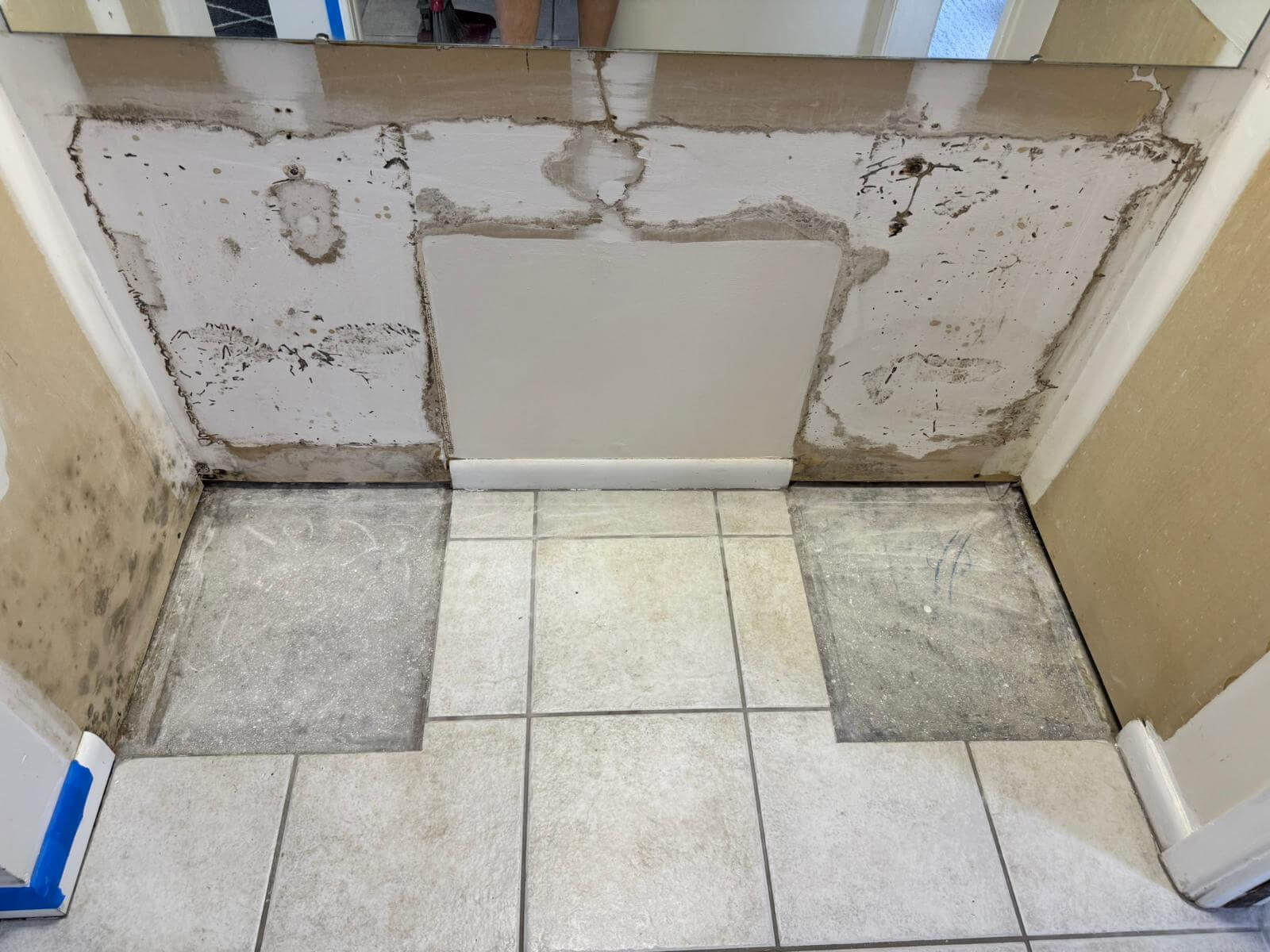
As last week ended our dated vanity room was a shell of its former self just holding a bit of concrete and damaged drywall - presumably from termites. If you squint and look at the left chunk of drywall it almost resembles a moth.
Our greatest concern was getting to the bottom of this termite damage that was treated way back in 1997. Pretty quickly we came to the understanding that no damage was active - as that would suggest over 20 years of termite feasting. If termites were eating for 20 years there would be a lot more visible damage. We've also had pest control who visits quarterly who have never noticed any signs of termites so we were convinced this was all old damage.
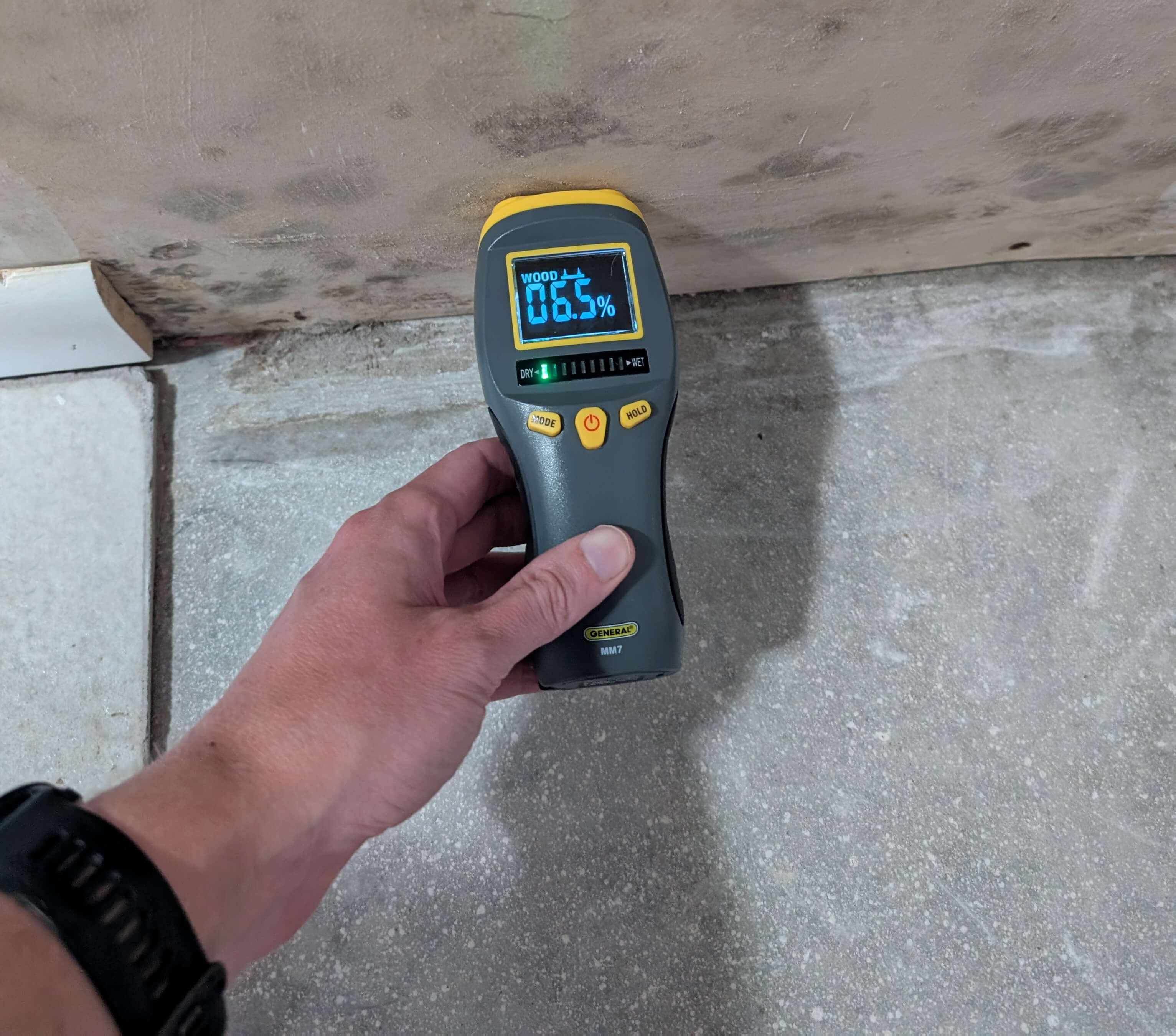
The first thing we did is borrow a moisture meter from the parents and check out the smaller wall which I've since learned is called a "pony wall". It only clocked in at 6.5% moisture which is reported as an acceptable level so at least this mold damage was also old.
The curiosity to know more of what hid behind the walls ended with the discussion to remove the wooden spindles and pony wall to open up more of this bedroom and take care of the mold spots. However prior to that I still wanted to understand more about this older termite damage and confirm it wasn't load bearing.
Knowing the older home owners used Terminix I called them to see if they would be willing to pull old records so I could learn exactly what was treated. Surprisingly they could confirm dates and that a policy existed for subterranean termites, but couldn't send/extract any documents for a non-account holder. They said if I paid for an inspection I could possibly get historic records of the treatment on a new policy, but I didn't want to get into a new pest control.
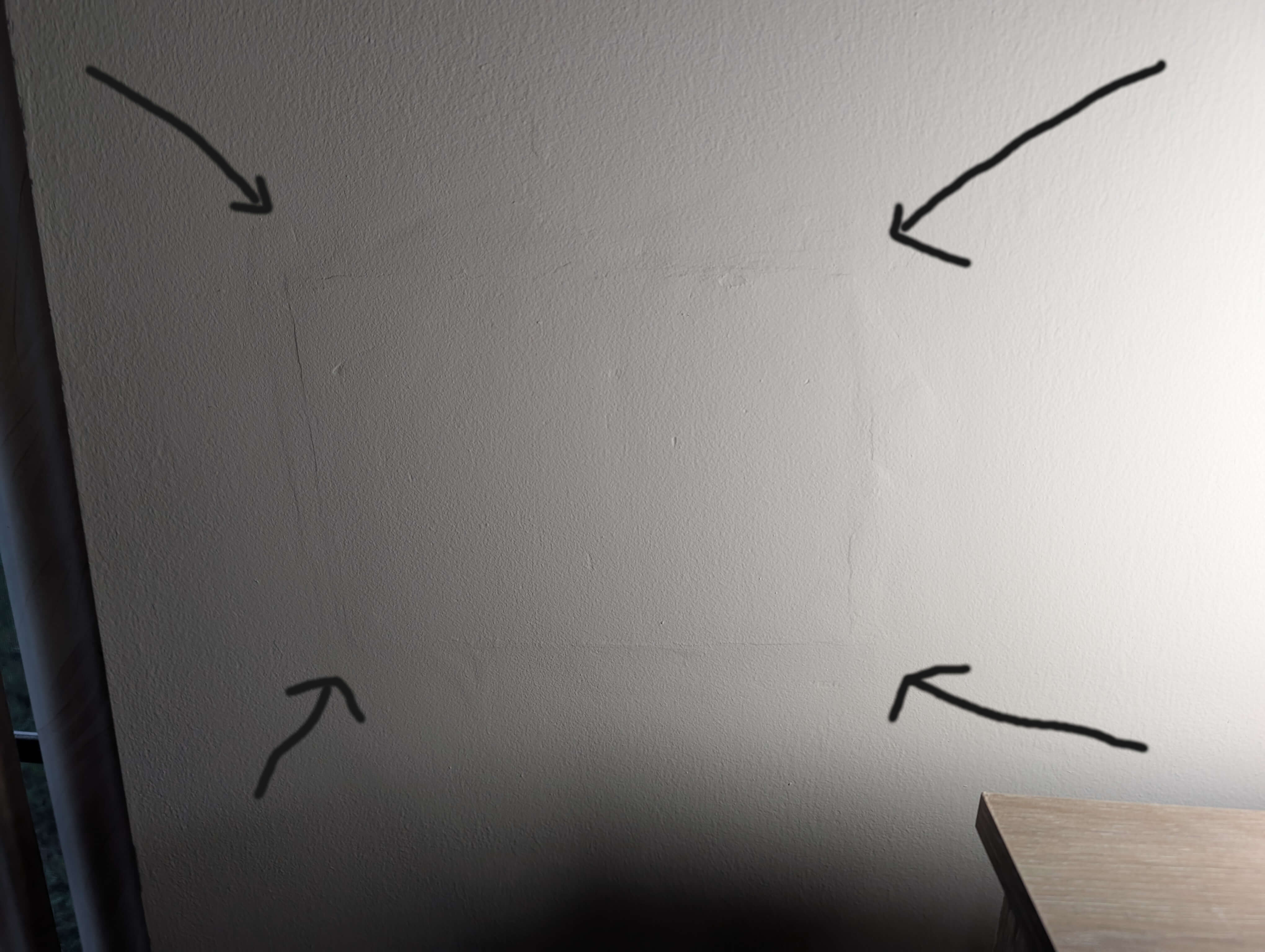
So I started wondering and piecing together a theory. Throughout the home there are these poorly patched holes in the wall and you can generally find one in every single room that hasn't yet been sanded & painted. I'm guessing that once termites were detected they wanted to see the scale of damage and cut out a hole in every room to check inside the walls. The size of these holes range in size, but since they are in random places and height levels it seems like a solid guess.
So we got to work prying the decorative trim off the pony wall to make it easier to pry off the wooden spindles. This was another messy amount of demolition as termite damaged wood was just falling out of every hole. Eventually when all the decorative wood was removed the amount of debris had subsided.

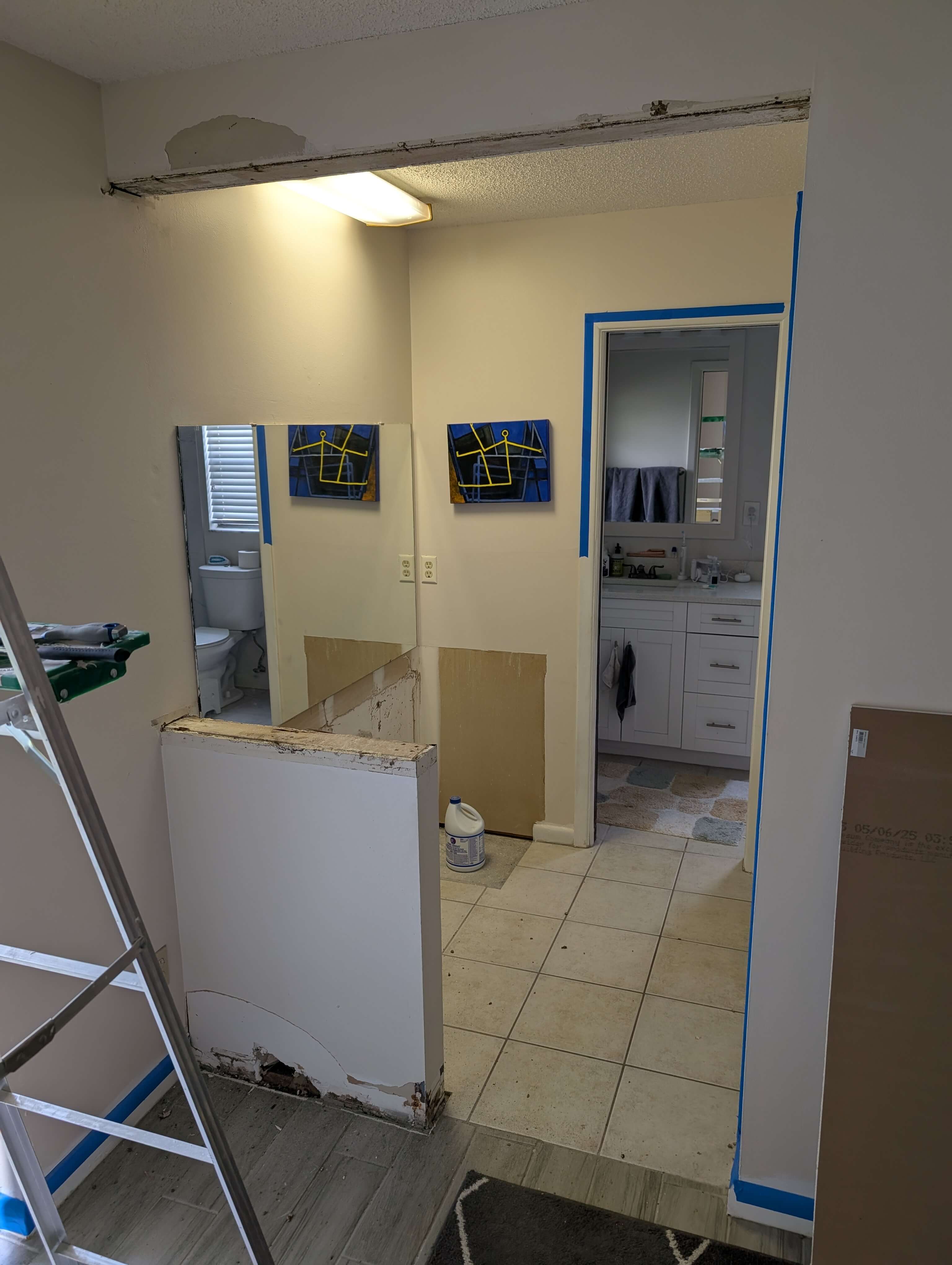
Wooden spindles & baseboards removed
We were getting close to seeing a tiny chunk of behind the wall and it was looking quite decayed from the small chunks we could see. It seemed the bottom plate of wood in the case of this pony wall had some termite damage. We made progress by cutting out a little hole of drywall to give us leverage to pull the rest of it off.
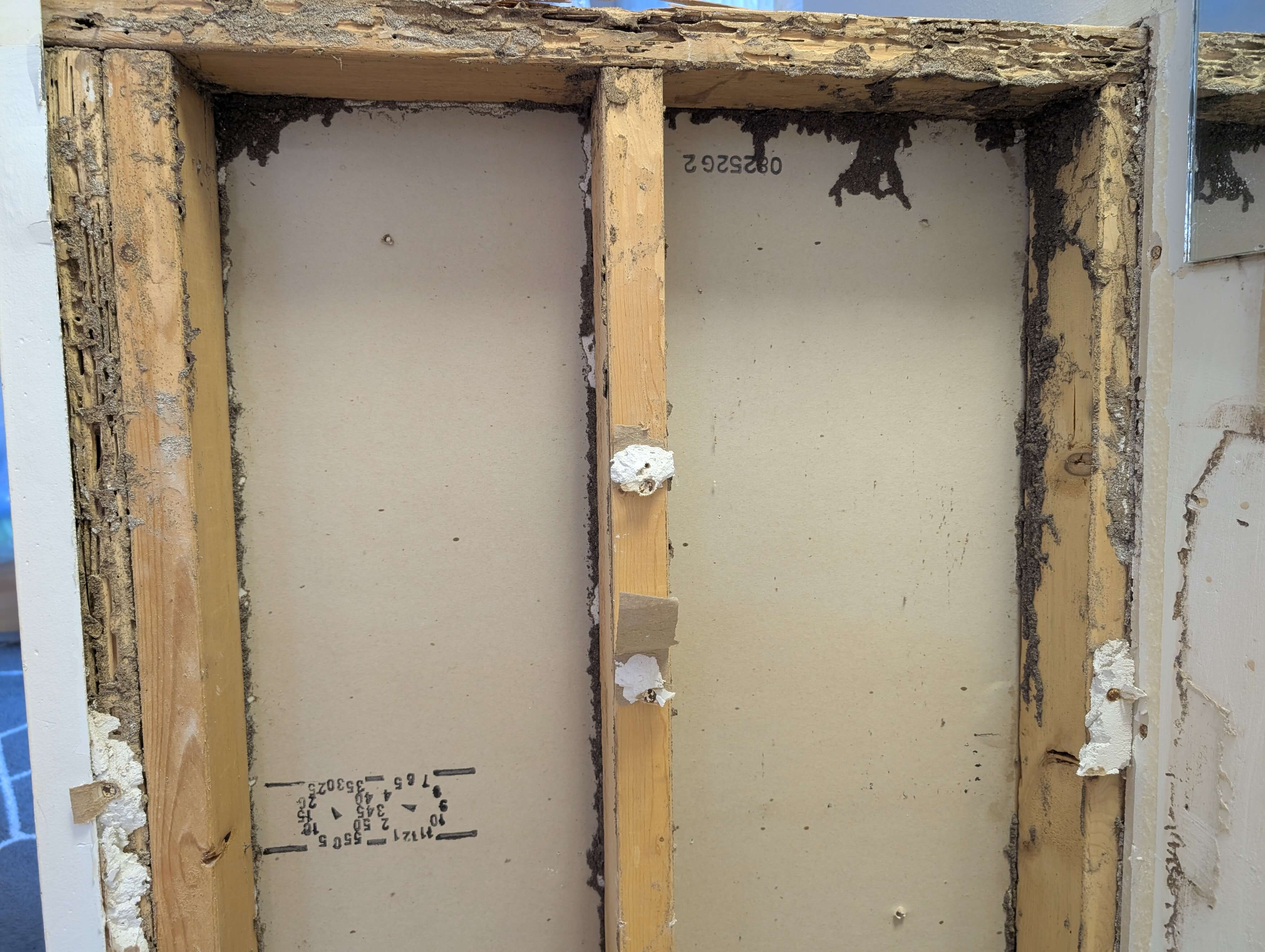
Once the wall was exposed we could see the outer layer of wood had disintegrated via the termite damage. This was sad to see as it proved further that the 1997 termite pest visit had to have occurred after some damage was present. We continued onward knocking pieces apart until we had enough leverage on a piece of wood to pry it out. This took a bit more effort than I imagined, but soon we had only one little base plate of wood remaining.
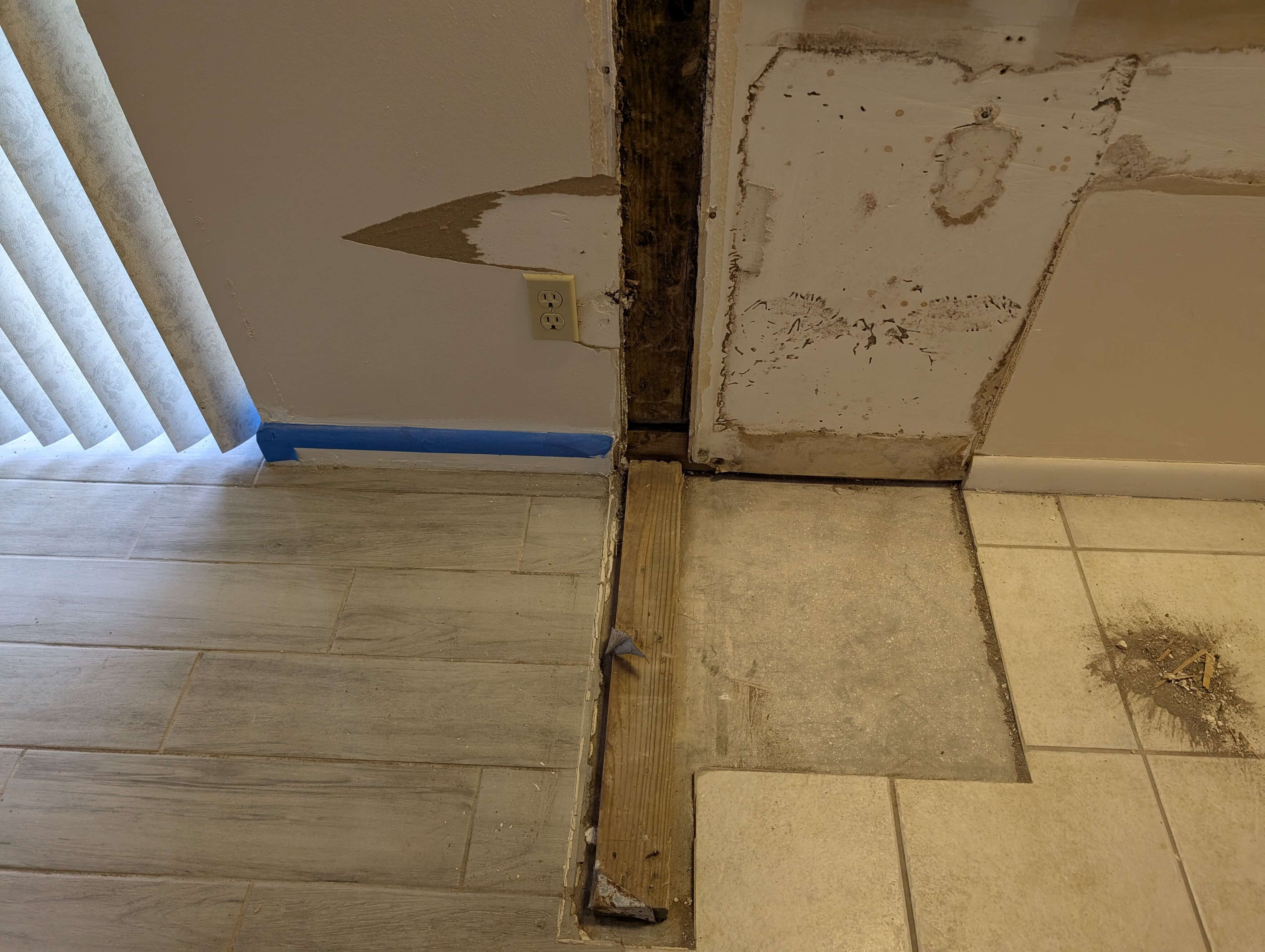
Little did I know the effort it would take to remove this one little wood plate. We couldn't find any screws to undo it and it was flush against the concrete slab. So we started a slow process of wedging the hammer under the wood to attempt to pry it off. This never really worked so we tried to get creative to hammer a screwdriver under the wood to help pry it apart. All this did was break the hammer and the cracked the screwdriver handle so we admitted defeated to break for lunch.
We went out to the local hardware store and got a pry bar and a brand new stronger hammer and returned home. This turned into a bleak activity as not even a stronger set of tools could release this plank after an hour of attempts. We went to the internet to watch a few videos of people that just continued to use a reciprocating saw to break the bolts/screws on the bottom.
So it was time to get creative - we brought out a manual wood saw and just started cutting chunks into this plank between the screws and that was immediate progress. Once we had cut a single slash through the wood it enabled prying off the smaller chunks much easier. We were finally making progress to get us back to the concrete slab.
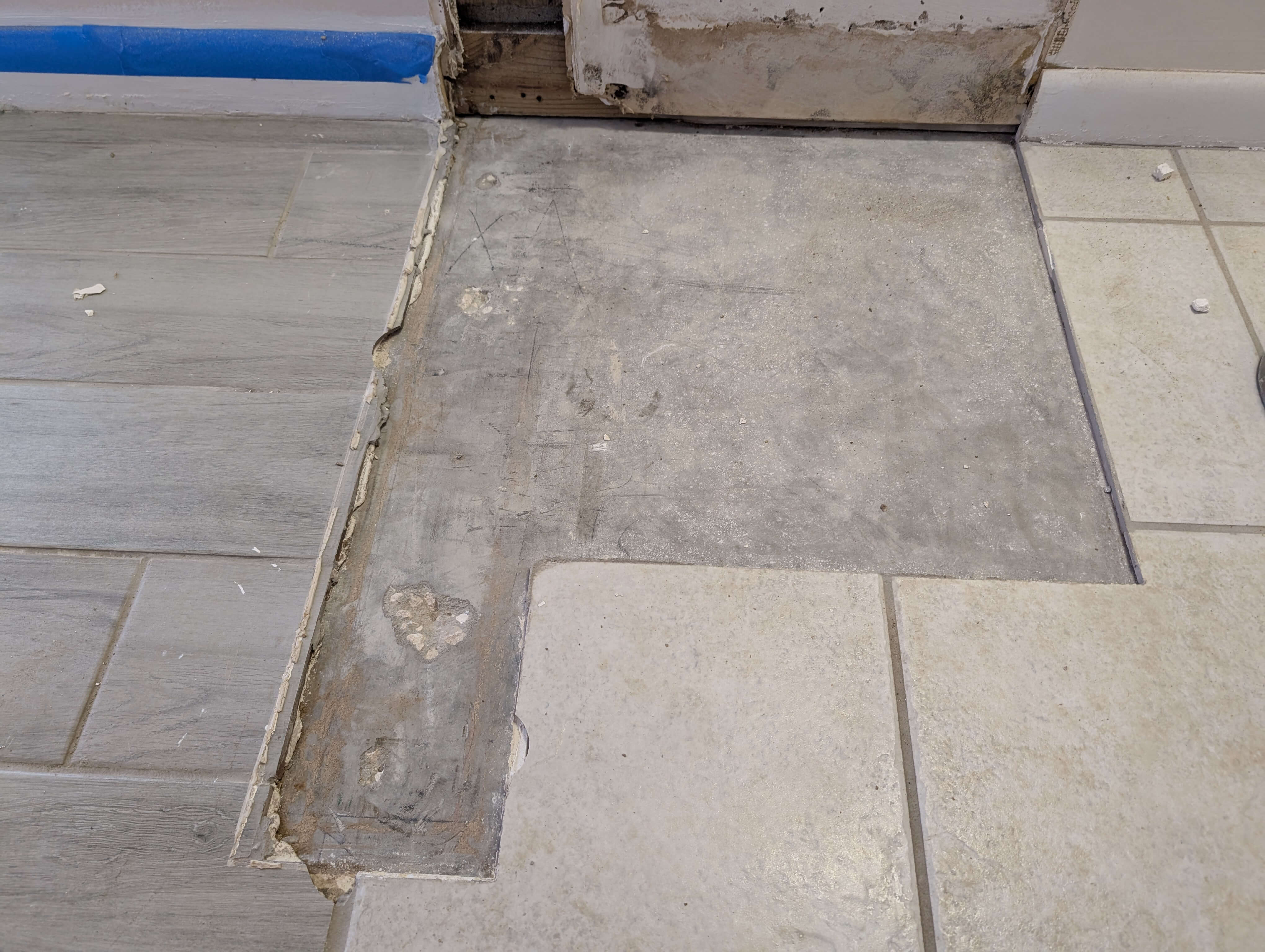
Now we had a few chunks of the foundation damaged that took a tiny bit of concrete filler to repair, but then we started on repairing the drywall. I had never replaced such large chunks before so we measured twice and cut once to produce a replacement piece to anchor to the wall and to the ceiling.
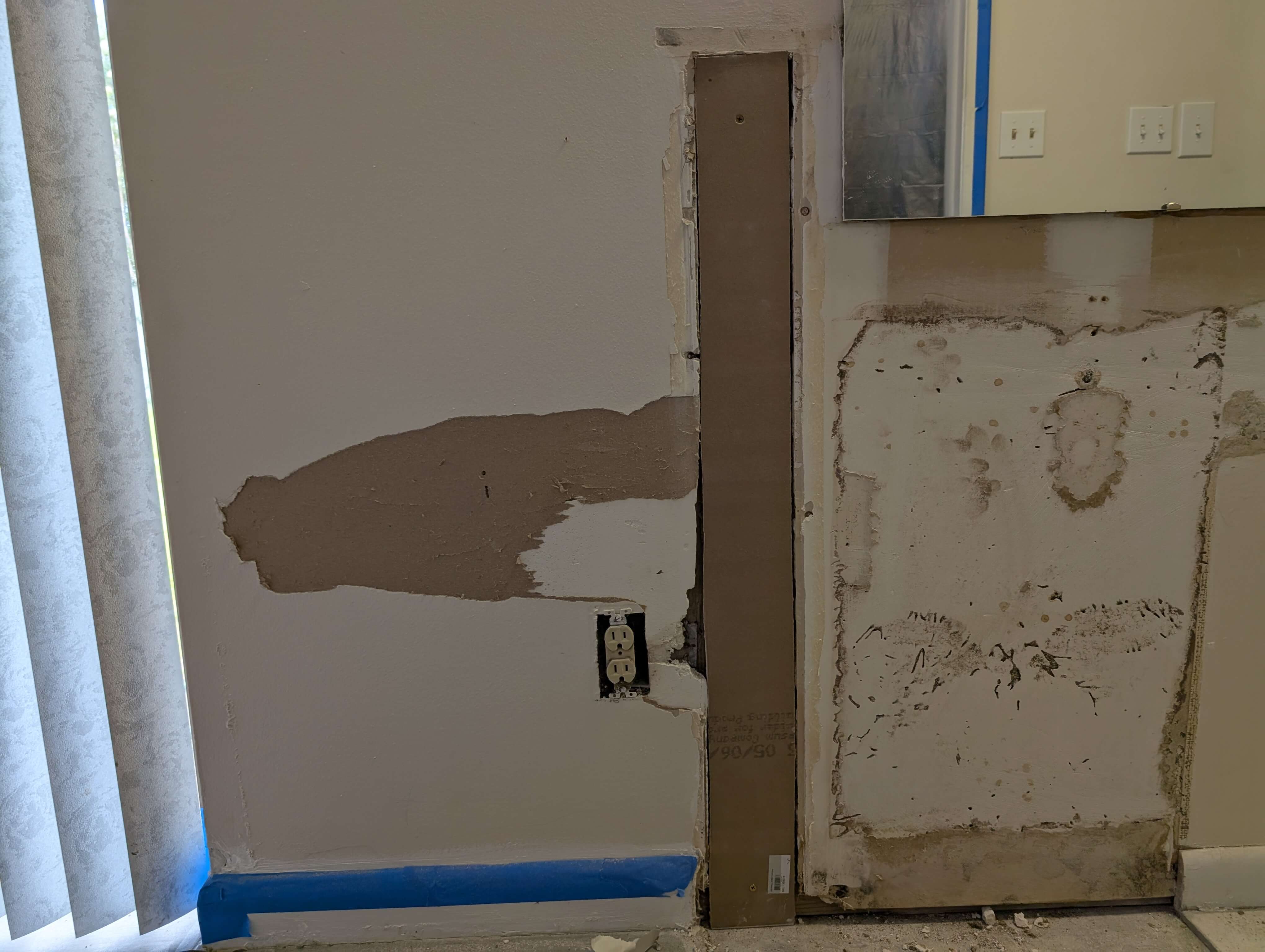
Installing the cut drywall piece (Yes we did it backwards) turned out to fit perfectly once screwed in. We had a lot of deficiencies around the area due to the termites so we knew we had our hands full when we got to applying compound.
We used both joint compound and regular as we went pretty heavily over the entire area to fix the tracks of termites and blend in the new piece of drywall. Watching professionals do this is a work of art, then watching us do it was embarrassing. However, once we apply a few more layers and paint it up - it might be completely unnoticeable.
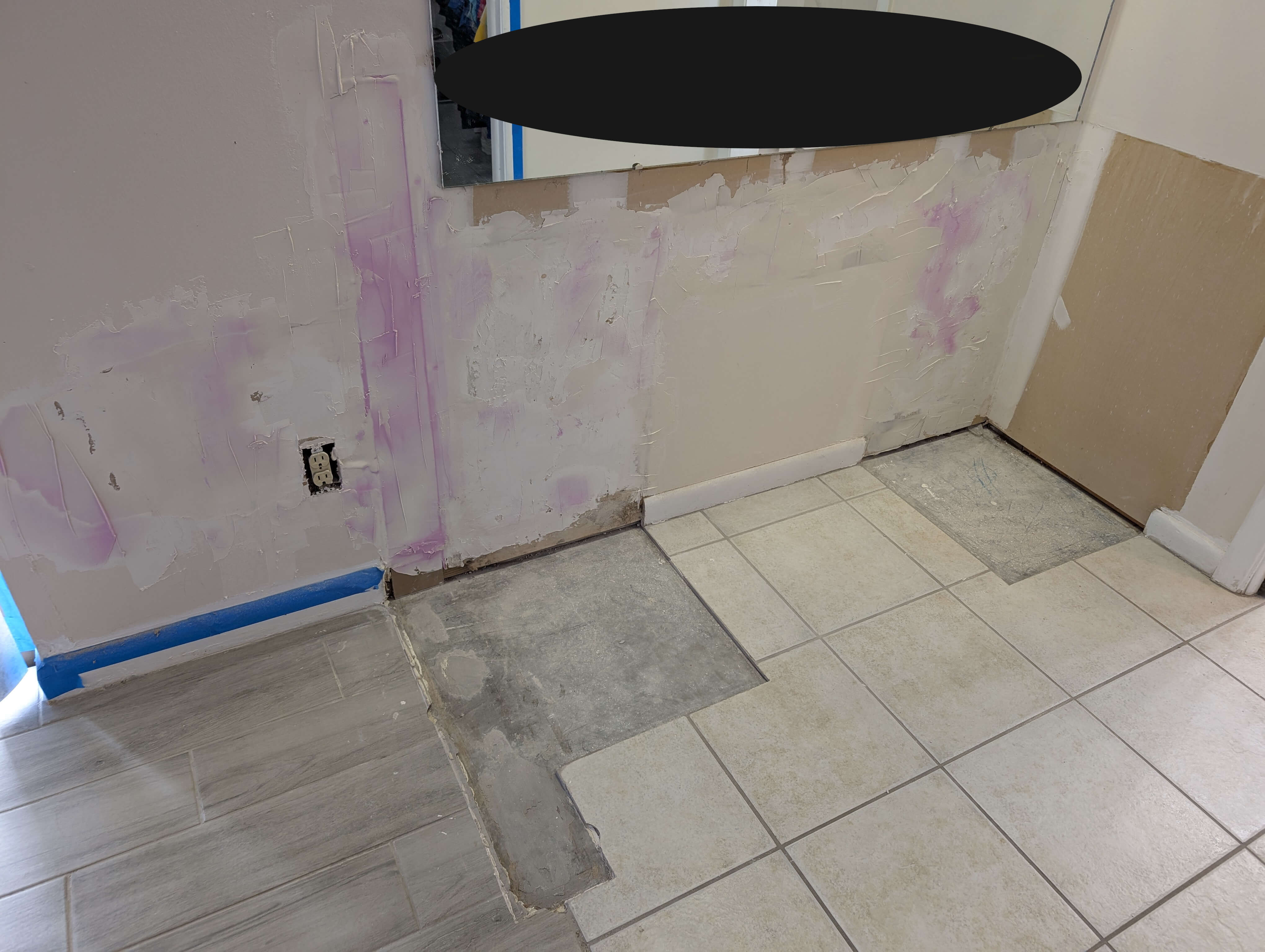
The end of the weekend snuck up on us so the project remains in the drywall "fix-up" stage for another free block of time. We aren't professionals at home improvement tasks so we under estimated the amount of time it would take for this and we haven't even figured out a plan for replacing the missing tiles.
We have no more of the white tile and couldn't find any source that still sold the ancient (25+ year) tile. However, the gray tile was put in during a remodel so we can still order as many of those as needed. We may end up re-tiling this intermediate room into all gray thus leaving the closet and bathroom as the original white tile. There may be a part 3 to this journey, but first we need to acquire some tiles.
